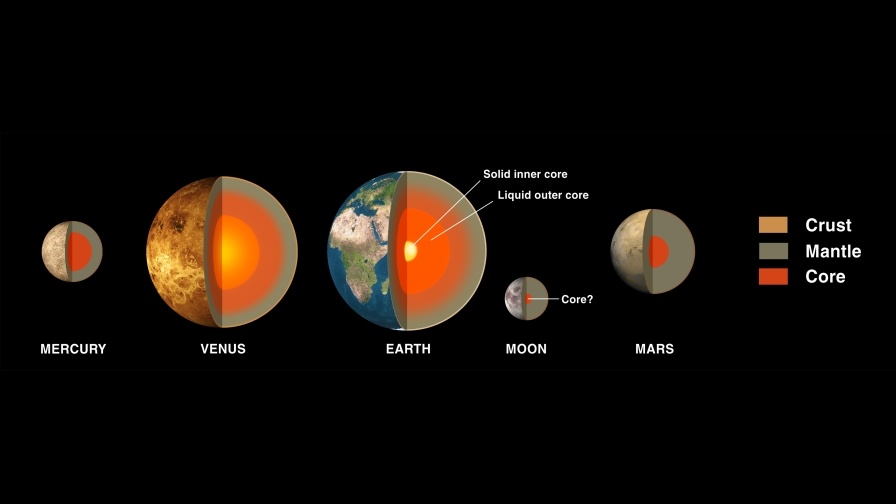Universe Today has examined the importance of studying impact craters, planetary surfaces, exoplanets, astrobiology, solar physics, comets, and planetary atmospheres, and how these intriguing scientific disciplines can help scientists and the public better understand how we are pursuing life beyond Earth. Here, we will look inward and examine the role that planetary geophysics plays in helping scientists gain greater insight into our solar system and beyond, including the benefits and challenges, finding life beyond Earth, and how upcoming students can pursue studying planetary geophysics. So, what is planetary geophysics and why is it so important to study it?
Continue reading “Planetary Geophysics: What is it? What can it teach us about finding life beyond Earth?”Earth is Hiding Another Planet Deep Inside
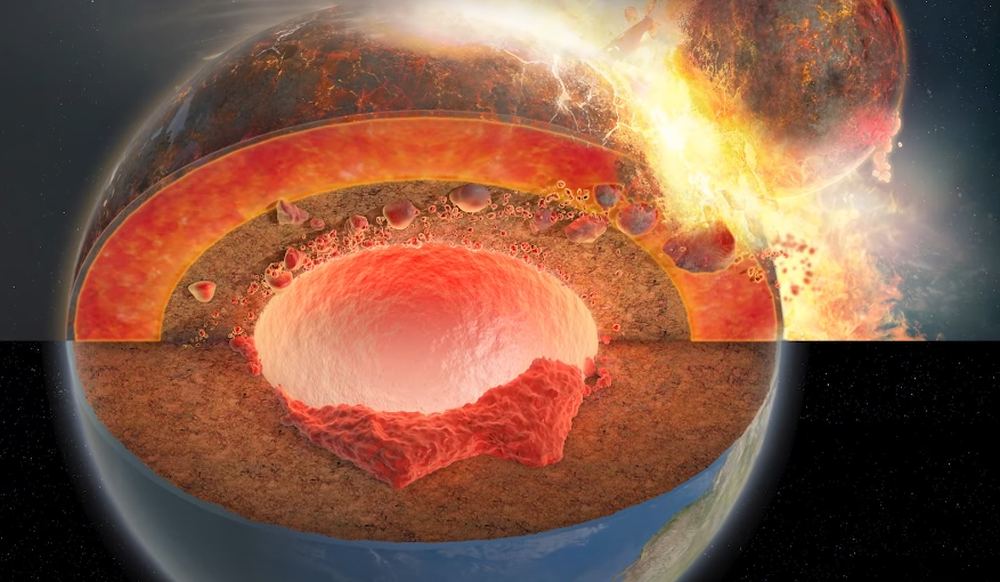
Earth’s early history is marked by massive collisions with other objects, including planetesimals. One of the defining events in our planet’s history, the formation of the Moon, likely resulted from one of these catastrophic collisions when a Mars-sized protoplanet crashed into Earth. That’s the Giant Impact Hypothesis, and it explains how the collision produced a torus of debris rotating around the Earth that eventually coalesced into our only natural satellite.
New research strengthens the idea that Theia left some of its remains inside Earth.
Continue reading “Earth is Hiding Another Planet Deep Inside”A Collapsed Martian Lava Chamber, Seen From Space
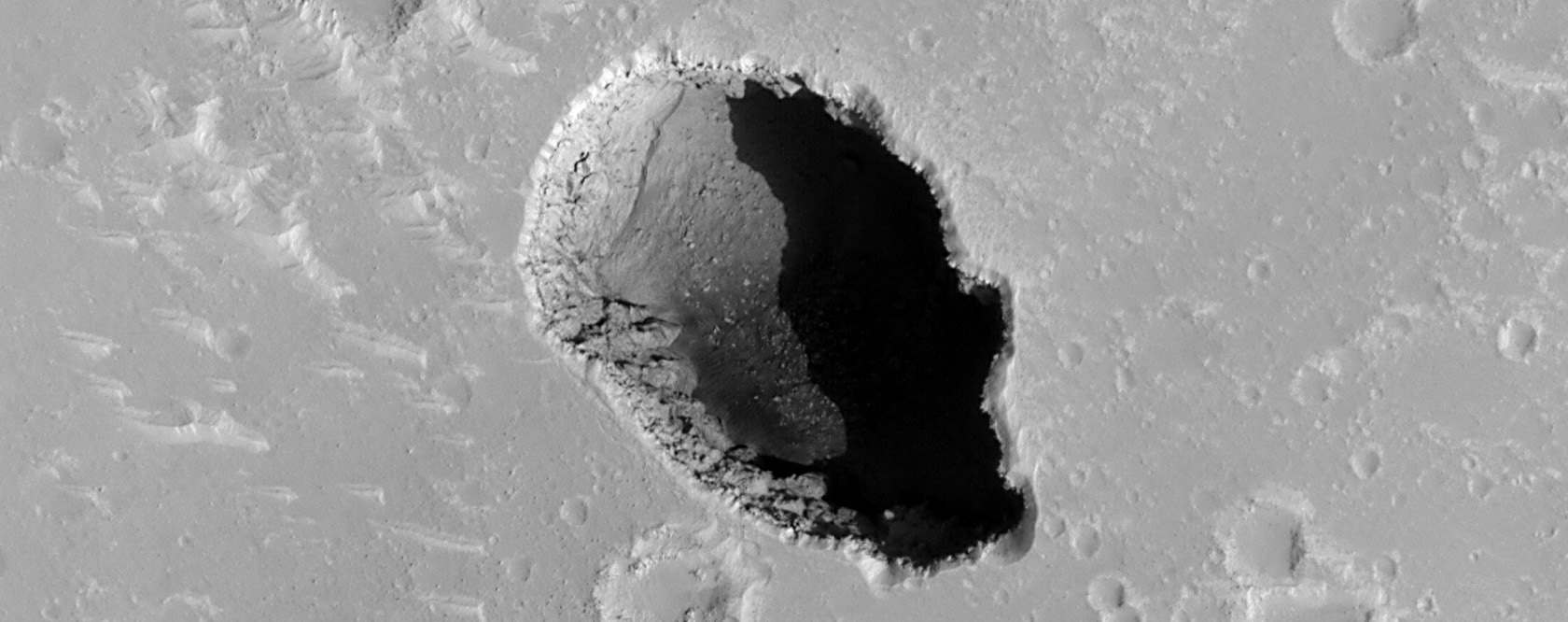
Lava tubes and chambers attract a lot of attention as potential sites for bases on the Moon and Mars. They provide protection from radiation, from temperature swings, and even from meteorites. They beg to be explored.
Continue reading “A Collapsed Martian Lava Chamber, Seen From Space”Is This a Collapsed Lava Tube on the Moon?
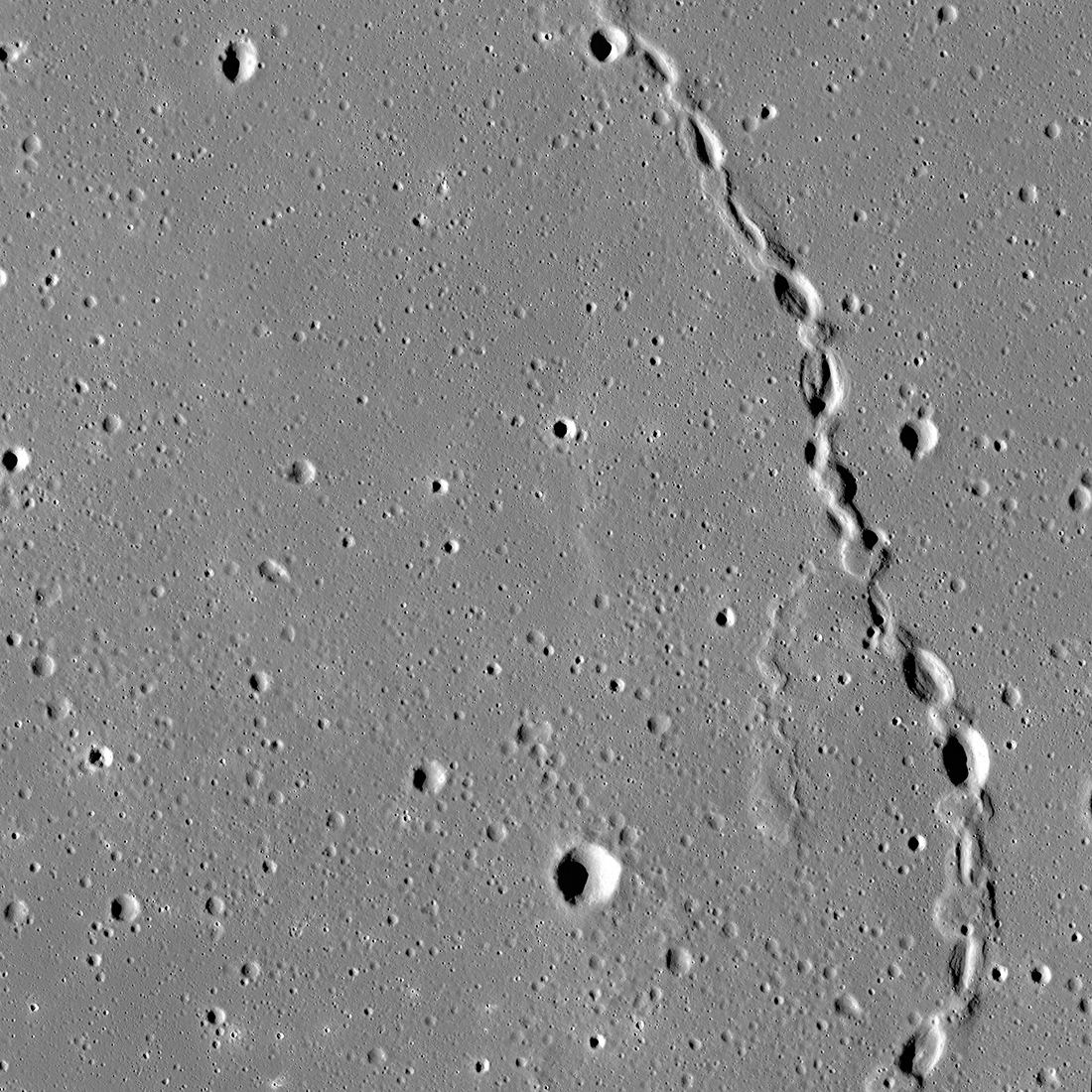
The Moon was once a geologically active place characterized by volcanoes, lava flows, and a magnetic field generated by action in its interior. The Moon’s airless environment has perfectly preserved evidence of this past and can be seen today as dark deposits, volcanic domes, and cones. But the most recognizable features are known as “sinuous rilles,” which are believed to be ancient lava tubes that have since collapsed. The Lunar Reconnaissance Orbiter Camera (LROC) recently captured images of a rille that extended 48 km long (30 mi) across the northern hemisphere.
Continue reading “Is This a Collapsed Lava Tube on the Moon?”Every Night and Every Morning, the Moon Rumbles With Tiny Quakes

The Moon was geologically active between 3.7 and 2.5 billion years ago, experiencing quakes, volcanic eruptions, and outgassing. Thanks to the Moon being an airless body, evidence of this past has been carefully preserved in the form of extinct volcanoes, lava tubes, and other features. While the Moon has been geologically inert for billions of years, it still experiences small seismic events due to tidal flexing (because of Earth’s gravitational pull) and temperature variations. These latter events happen regularly and are known as “moonquakes.”
Thanks to the Apollo missions, scientists have measured this activity using seismometers placed on the surface. In a recent NASA-funded study, a team of researchers from the California Institute of Technology (Caltech) reexamined the seismic data with a machine-learning model. This revealed that moonquakes occur with precise regularity, coinciding with the Sun rising to its peak position in the sky and then slowly setting. In this respect, moonquakes are like a “Lunar Alarm Clock,” which could be useful for future missions and lunar settlers!
Continue reading “Every Night and Every Morning, the Moon Rumbles With Tiny Quakes”Did Life Need Plate Tectonics to Emerge?

It’s widely accepted that Earth’s plate tectonics are a key factor in life’s emergence. Plate tectonics allows heat to move from the mantle to the crust and plays a critical role in cycling nutrients. They’re also a key part of the carbon cycle that moderates Earth’s temperature.
But new research suggests that there was no plate tectonic activity when life appeared sometime around 3.9 billion years ago. Does this have implications for our search for habitable worlds?
Continue reading “Did Life Need Plate Tectonics to Emerge?”The Moon has a Solid Core Like the Earth
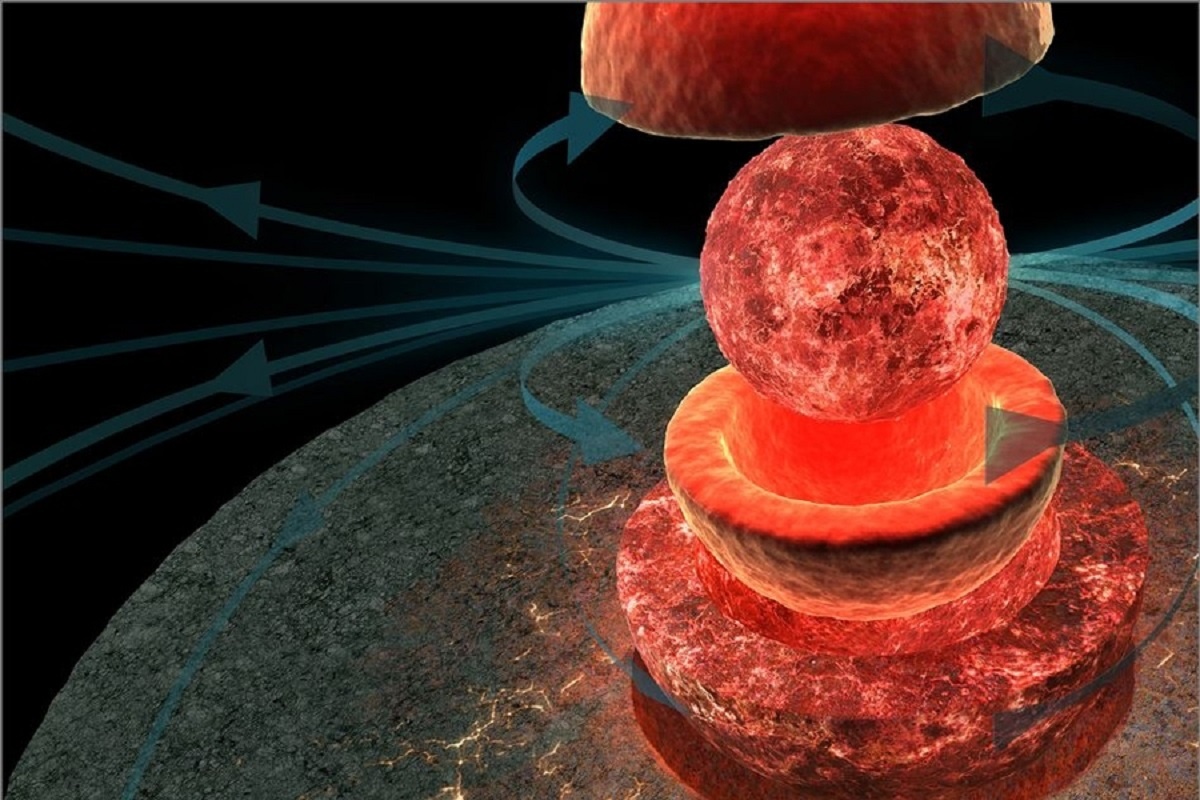
Some fifty years ago, the Apollo Program sent the first astronauts to the Moon. In addition to the many science experiments they conducted on the surface, the Apollo astronauts brought back samples of lunar rock for analysis. The Soviet Luna program sent several robotic missions to the Moon around the same time that conducted sample-return missions. The examination of these rocks revealed a great deal about the composition of the Moon and led to new theories about the formation and evolution of the Earth-Moon system.
For example, analysis of the rocks revealed that the Earth and the Moon are similarly composed of silicate minerals and metals. This led to theories that the Moon’s interior is similarly divided into a silicate mantle and crust and a metallic core. However, many aspects of this theory, like the structure of the core (solid or molten?), have been debated for decades. According to new findings by a team of French scientists, it is now a scientific certainty that the Moon’s innermost region consists of a solid inner core surrounded by a molten outer core (just like Earth’s).
Continue reading “The Moon has a Solid Core Like the Earth”Not Snowball Earth, More of a Slushball Earth

Our planet hasn’t always been the warm, inviting place we know today. At least five times in its history, Earth froze over, locked in the grip of an ice age. Scientists sometimes refer to these periods as “Snowball Earth.” The popular idea is that everything was covered with ice, making life difficult, if not impossible. But, there’s new evidence that during at least one of these icy periods, parts of Earth’s surface could have been more like a giant mushy ball of slush.
Continue reading “Not Snowball Earth, More of a Slushball Earth”The First Radiation Map of the Skies Over Africa
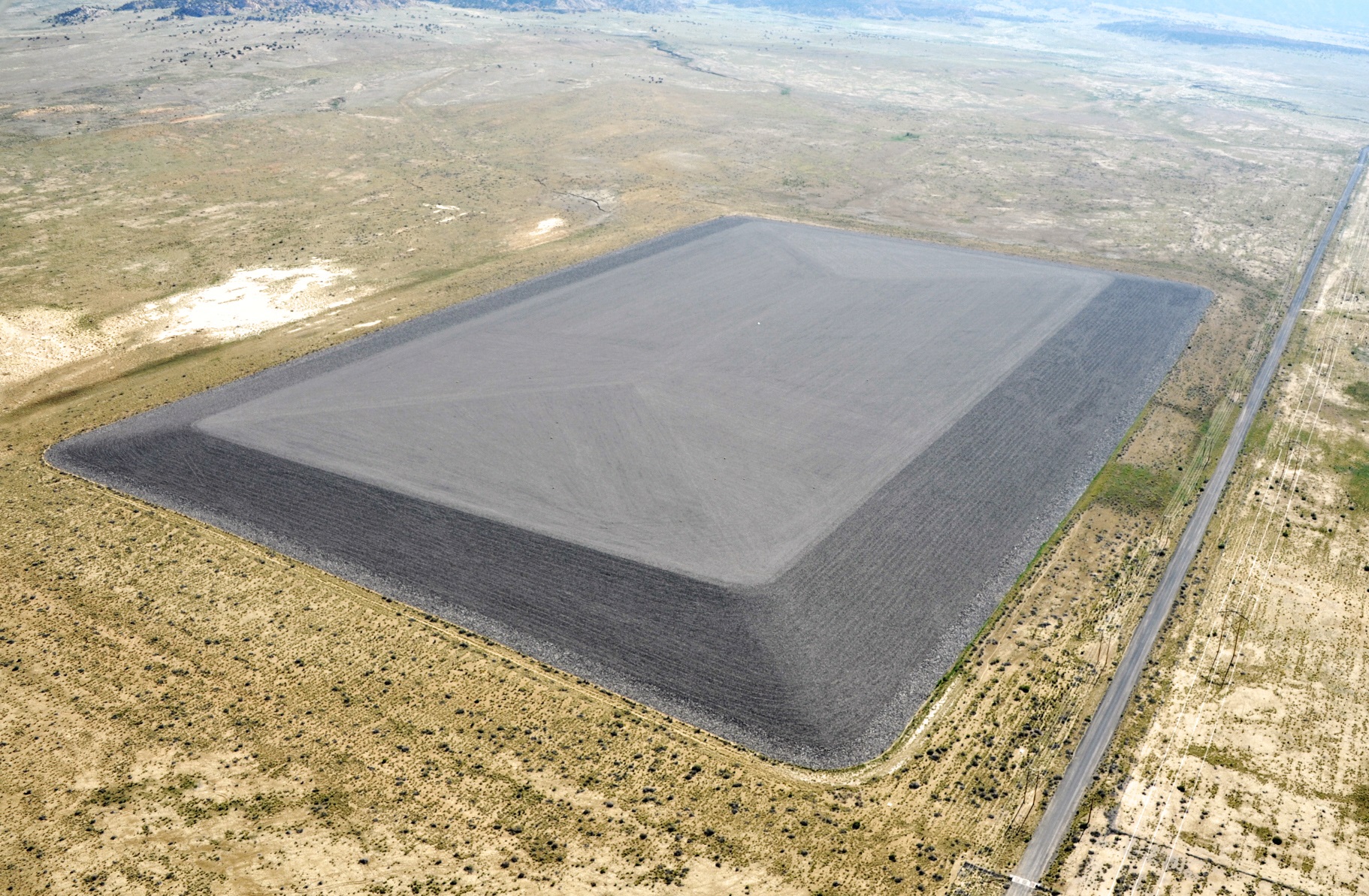
Astronomers have developed a way to cheaply and easily measure the radiation exposure experienced by airline crews over Africa.
Continue reading “The First Radiation Map of the Skies Over Africa”The Earth has an Even More Inner Core, and it's a Ball of Solid Metal
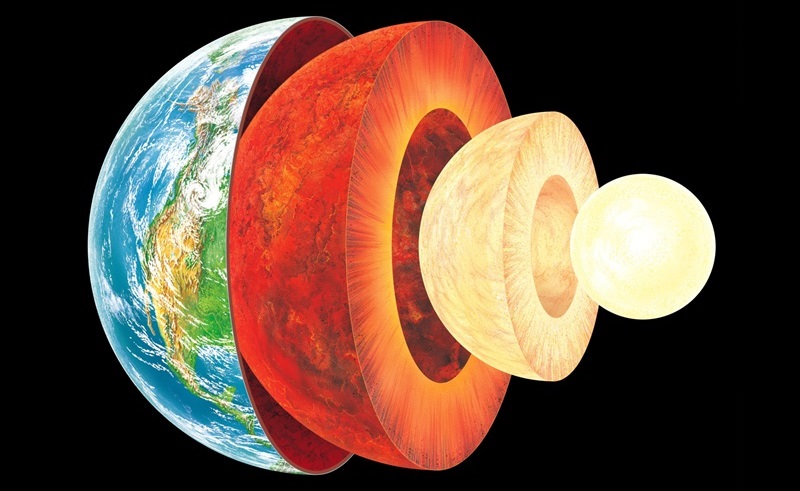
For generations, scientists have probed the structure and composition of the planet using seismic wave studies. This consists of measuring shock waves caused by Earthquakes as they penetrate and pass through the Earth’s core region. By noting differences in speed (a process known as anisotropy), scientists can determine which regions are denser than others. These studies have led to the predominant geological model that incorporates four distinct layers: a crust and a mantle (composed largely of silicate minerals) and an outer core and inner core composed of nickel-iron.
According to seismologists from The Australian National University (ANU), data obtained in a recent study has shed new light on the deepest parts of Earth’s inner core. In a paper that appeared in Nature Communications, the team reports finding evidence for another distinct layer (a solid metal ball) in the center of Earth’s inner core – an “innermost inner core.” These findings could shed new light on the evolution of our planet and lead to revised geological models of Earth that include five distinct layers instead of the traditional four.
Continue reading “The Earth has an Even More Inner Core, and it's a Ball of Solid Metal”
